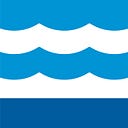More fun for everyone.
Once a pipe dream back in the 1960s, actual pipes and many programs ever since have the Cuyahoga River and lakefront reborn for recreation.
Fishing, sailing, and many other recreational activities benefit from easy access to these freshwater resources. It’s a large part of what makes our city unique. Our regional economy is tied to Lake Erie, the lakefront, and the entire Lake Erie watershed.
But, as old photographs, video footage, and oral history illustrate, our Lake and the Cuyahoga River have not always been safe for recreation.
Today, following 50 years of grassroots clean-up, federal enforcement, changes to municipal policies, nonprofit leadership and community advocacy, and utility progress, our local waterways have become prized natural resources. And as Lake Erie and the Cuyahoga have attracted more nature enthusiasts and recreationists, investors have developed businesses in communities along the river and lake.
This month, as we approach the official start of the summer season, we’re celebrating the District’s prominent role in monitoring and protecting our clean water. With regard to recreation, a clear example of this work is our rigorous schedule for testing recreational water quality at Cleveland’s beaches.
Sources of beach water pollution include combined sewer overflows (CSO), stormwater runoff, sanitary sewer overflows, cross connections, septic systems, agricultural discharges, wildlife, and pet waste.
While many coastal beaches are monitored by local public health agencies, our team collects and tests water samples every day throughout the beach season, and our substantial investment in this area demonstrates our purpose in protecting our waterways.
This work dates back almost 30 years, when the Sewer District began working with the U.S. Geological Survey (USGS) to collect water samples for analysis. By 1995, regular monitoring at Edgewater Park and Euclid Beach was implemented, and throughout the early 2000s the NEORSD and USGS developed a predictive model for our beaches, based on years of collected environmental data (including turbidity, wind speed and direction, wave height, and rainfall). The model would be used to alert beachgoers via swim advisories based on the concentration of bacteria such as E.coli. That work has evolved and continues to this day.
The data trends align with progress on Project Clean Lake, as we have reduced CSO volumes by more than a billion gallons annually, compared to 10 years ago. We’ve eliminated 14 CSO outfalls from our combined sewer
system, completed three of seven planned storage tunnels, and expanded the capacity of our Easterly plant to take on more flow, all of which leaves Lake Erie better protected now and in the future.
Personal accounts of the Cuyahoga of the 1960s capture the uncertainty surrounding the fate of the crooked river. Photos of Lake Erie beaches in the 1970s show chlorine being dumped directly into the water in an attempt to make it safe for swimming. Thankfully, such methods are no longer needed.
Our CSO reductions, ongoing industrial pretreatment, and consistent award-winning performance at our treatment plants have provided an environment where water-related recreation can thrive.
We plan to keep it that way.
Story by Mike Uva.
